 It’s not a secret that Indian folk garments are rather eye-catching. Lots and lots of gems, sequins, gold and silver embroidery, beads, jewels, etc. are used to make any clothing piece look festive and ornate. But there’s one rare and extremely unique embellishment – sequins made from beetle elytra. They change color beautifully and shine in the sun like no other. And they are absolutely organic. This time, we’ve prepared for you something really special. It is a 19th-century jama coat with green beetle elytra sequins. Amazing sight to behold!
It’s not a secret that Indian folk garments are rather eye-catching. Lots and lots of gems, sequins, gold and silver embroidery, beads, jewels, etc. are used to make any clothing piece look festive and ornate. But there’s one rare and extremely unique embellishment – sequins made from beetle elytra. They change color beautifully and shine in the sun like no other. And they are absolutely organic. This time, we’ve prepared for you something really special. It is a 19th-century jama coat with green beetle elytra sequins. Amazing sight to behold!
One of authentic Indian men’s garments is called “jama”. It is a very special kind of an Asian coat – tight-fitting around the torso and with wide, flared skirt. The length can be below-the-knee or to the ankles. Often, jamas were ornate, embellished with gems, sequins, beads, embroidery, or even extremely rare and unique decoration – beetle elytra sequins (organic and so fragile material).
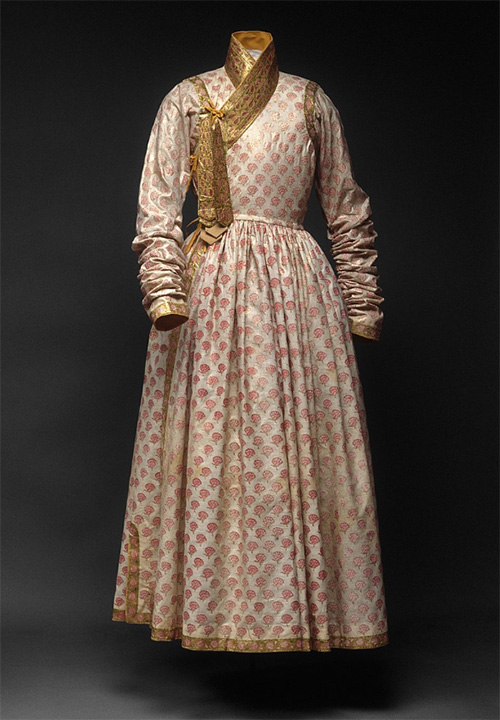
Jama coat from The Metropolitan Museum of Art
Such an Indian jama with beetle elytra sequins is exhibited at the V&A Museum. And here is the story of preserving, repairing, and conserving the garment for future generations.
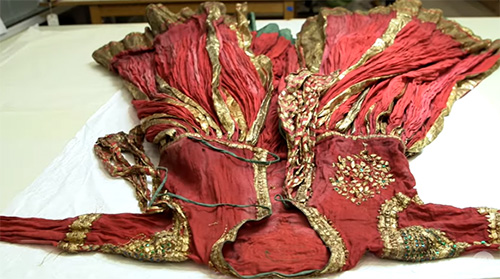
“Jama is a type of garment that was worn by men in many regions of India from about the 16th century to the 19th century. We have an obligation to make these objects last as long as they possibly can. What that means is that we need to give them the attention and care they require”, says Avalon Fotheringham, curator of Asian Department in the V&A.
“It was very dirty. There was a lot of very fine dark particulate surface oiling. There was also a lot of moth damage. But the main issue was that the skirt was just so heavy!”, comments Lauren Osmond, Samuel H. Kress Textile & Fashion Conservation Fellow.
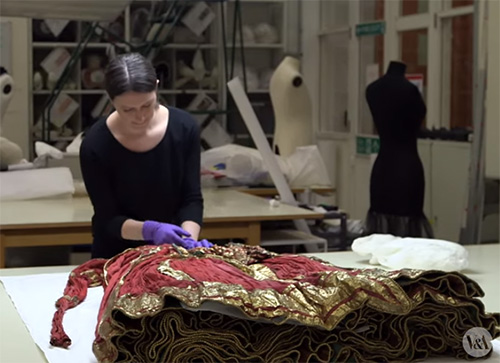
The intention of this project was to clean the jama, but they also wanted to stabilize it so that they could put it on display without fear that any of the damage would get any worse.
Unfortunately, the museum conservators could not wet clean because the dyes are fugitive. So they started with mechanical cleaning, using a vacuum under-low suction, and then used polyurethane cosmetic sponges. It took a while, it took a long time.
A lot of the embellishments on the bodice were in really poor condition. So they worked with scala thread to, basically, couch these materials back down onto the ground fabric. And couching is a type of stitch used a lot in clothing conservation.

Another process throughout the jama was to patch the holes, especially the large ones that were at risk. To do that, they worked with a stable Tex thread.
What makes this jama really exciting to work on is the beautiful jewel beetle elytra sequins that decorate the bodice. It's the actual winged case of a beetle! And it's completely organic. How it behaves over time is something that the museum workers are still learning about.
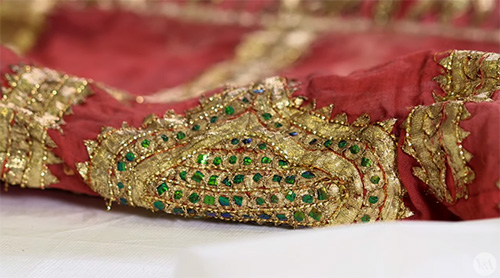

They have about 100 objects in the collection, whose design is dependent on the survival of this material.
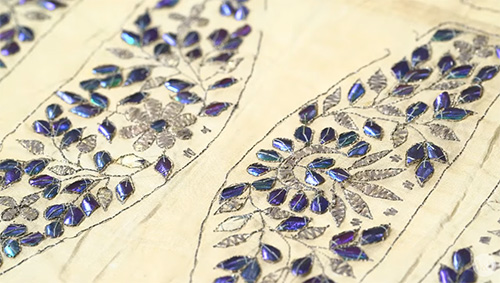
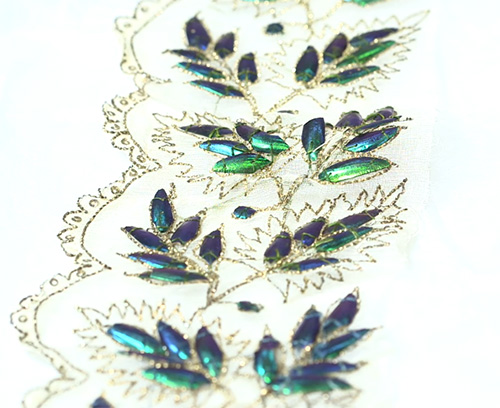

Other exhibits with beetle elytra adornments
What you can see in a lot of such decorations is a color shift, so it's an actual structural color change – the microstructure of the elytra is changing.
The Victoria and Albert Museum, together with the Natural History Museum, are doing research about how to properly preserve these beetle elytra sequins on vintage clothing pieces for the future. It is critical in terms of maintaining the stability of the collection.
With something like this jama, the attention that it's been given, it’s going to add decades if not a century to its life.
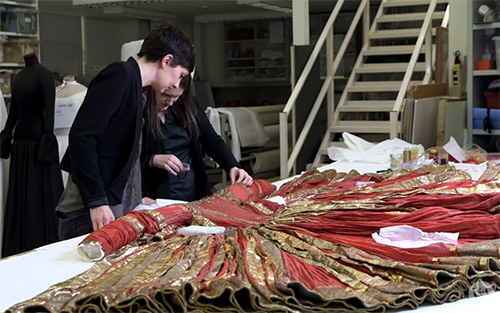
This jama is huge and heavy, so they had to construct the support lining for the bodice in order to keep the outfit from falling apart. This lining lifts the weight from the bodice.
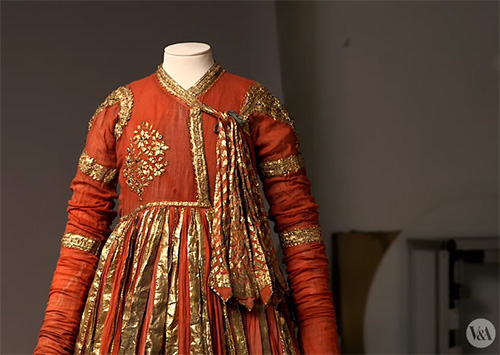
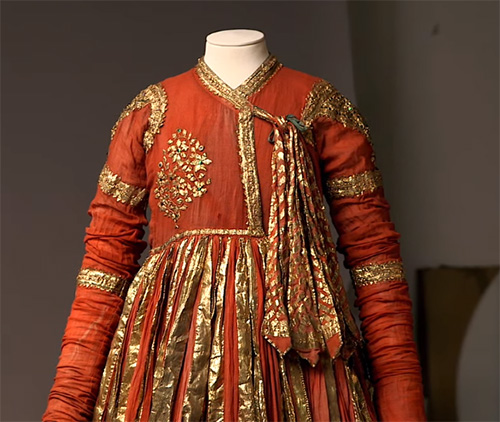
And that’s how this vintage 19th-century jama will be able to stay on display for another several decades.
(c)


